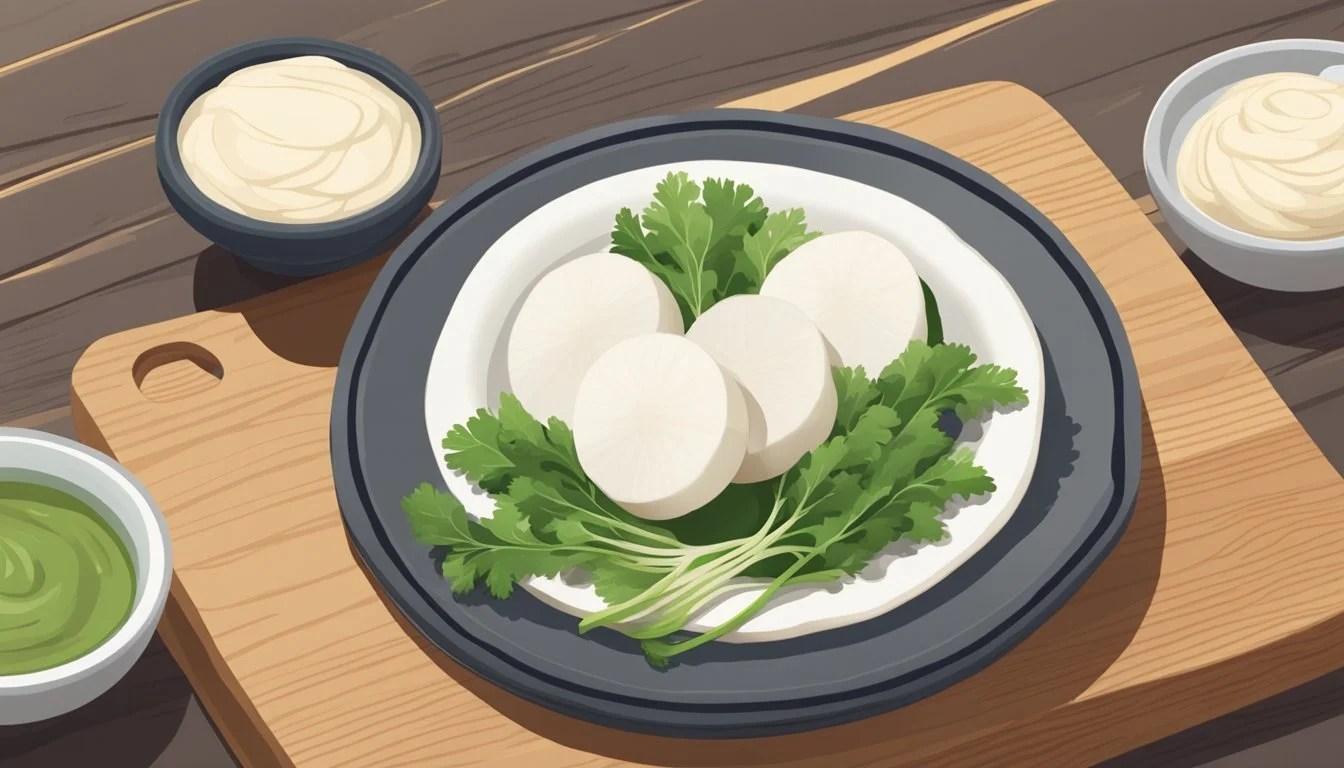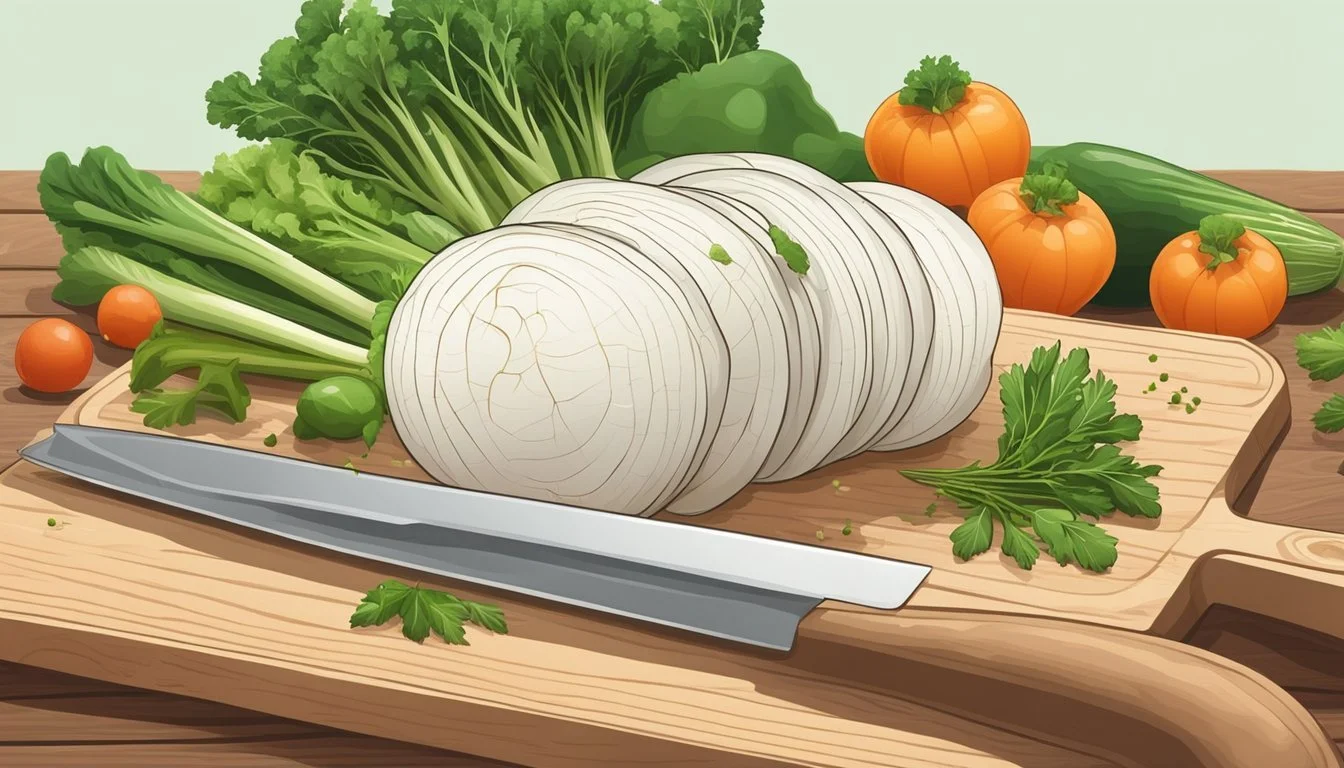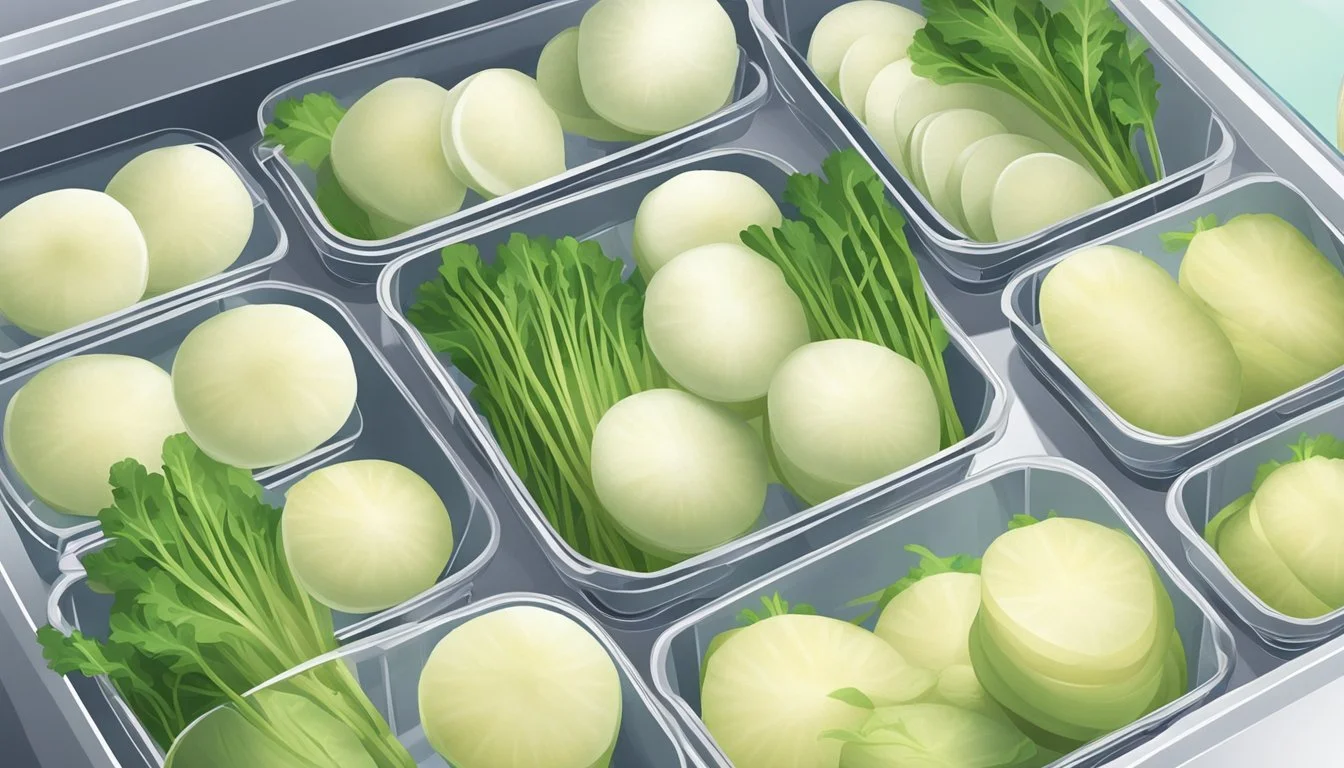How do you eat a daikon radish?
Your Guide to Enjoying This Versatile Vegetable
Daikon radish, a long white root vegetable with origins in East Asia, has become a staple in various cuisines around the world. It is a versatile vegetable that offers a mild and slightly sweet taste, distinguishing itself from its smaller, peppery red radish cousins. Known for its crunchy texture, daikon radishes can be prepared in multiple ways to suit different dishes and flavor profiles.
Incorporating daikon into meals is straightforward, as it can be eaten both raw and cooked. When raw, it is often grated or thinly sliced, adding a refreshing crunch to salads or as a garnish. Cooking daikon, on the other hand, transforms its texture and mellows its flavor, making it an excellent addition to stir-fries, soups, and even pickled recipes. Each preparation method highlights the root vegetable's unique characteristics and health benefits, such as its low calorie count and high vitamin C content.
Daikon Radish Overview
Daikon radish, an integral part of East and South Asian cuisines, is not only praised for its crisp texture and mild flavor but also for its impressive nutritional profile, offering a host of vitamins and minerals.
History and Origin
The daikon radish has its roots in Asia, with a significant presence in Japanese culinary traditions. It is a cruciferous vegetable native to China and Japan and has been cultivated there for centuries. Known variously as luóbo in Chinese and as winter, white, oilseed, or icicle radish, daikon has expanded beyond Asian borders and is now grown around the world.
Nutritional Profile
Daikon is low in calories but rich in important nutrients. It provides a notable amount of fiber and protein, which are crucial for healthy digestion and muscle maintenance, respectively. Also rich in vitamin C, an antioxidant that supports immunity and skin health, daikon makes an important contribution to a well-rounded diet. Here's a brief overview of the nutritional composition of daikon radish per 100g serving:
Calories: 18 kcal
Protein: 0.6 g
Fiber: 1.6 g
Vitamin C: 22 mg
Calcium: 27 mg
Folate: 38 µg
Potassium: 227 mg
Magnesium: 16 mg
The radish also provides a source of calcium and magnesium, both minerals necessary for bone health, muscle function, and nervous system support. With its high potassium content, daikon can aid in maintaining healthy blood pressure levels, while the folate helps in DNA synthesis and repair. Being part of the cruciferous vegetable family, it is an excellent addition to a diet for those looking to increase their antioxidant intake.
Preparation Basics
Before one begins to eat daikon radish, proper preparation is crucial. This includes thoroughly washing and peeling the skin, as well as mastering various cutting techniques suitable for different dishes.
Washing and Peeling
One should carefully wash the daikon radish under cold running water to remove any dirt and grit. A vegetable brush can assist in ensuring cleanliness. Peeling is not always necessary, but when a recipe calls for it or personal preference dictates, use a vegetable peeler or a paring knife to remove the skin, revealing the crisp and white flesh underneath.
Cutting Techniques
The daikon radish can be cut into various shapes and sizes depending on its culinary use. Techniques include:
Slicing into rounds: Suitable for salads or roasting, aim for uniform thickness to ensure even cooking.
Julienning: Cutting into long, thin strips, often used in stir-fries or as a garnish.
Cubing: Ideal for stews or roasting, providing hearty pieces that absorb flavors well.
Grating: Grated daikon, known as "mu" in Korean cuisine, is used in dishes like kimchi for its ability to soak up seasoning and provide texture.
Prepare the daikon radish using the method best suited to one's recipe to enhance the flavor and presentation of the dish.
Cooking Methods
Daikon radish is a versatile ingredient and can be prepared using various cooking methods to suit different recipes. Its mild flavor allows it to blend well with other ingredients in salads, while cooking techniques like roasting or stir-frying enhance its natural sweetness and texture.
Raw Applications
Salads: Daikon radish is often used raw, julienned or shredded to add a crisp texture and mild flavor to salads.
Recipe Tip: Combine with carrots and a light vinaigrette for a refreshing side dish.
Recipe Suggestion: Slice daikon thinly and pickle in a mixture of vinegar, sugar, and salt for a tangy addition to meals.
Cooking Techniques
Stir-Fries: Cooking daikon in stir-fries with other vegetables like mushrooms and carrots offers a crunchy texture.
How to Cook: Sauté in a pan with a little oil over medium-high heat until desired tenderness is achieved.
Roasted Daikon:
Preheat the oven to 375°F (190°C).
Cut daikon into rounds or cubes, toss with oil and a sprinkle of salt, and roast until slightly browned.
Soups and Stews:
Daikon can be chopped and added to soups and stews where it absorbs the surrounding flavors while imparting its own subtle taste.
Steamed Daikon:
Steaming is an excellent way to preserve the nutrients in daikon.
Once softened, it can be tossed with olive oil and added to dishes like fish side plates for extra flavor.
Popular Daikon Dishes
Daikon radishes are incredibly versatile in culinary applications, ranging from traditional Asian selections to inventive modern dishes that cater to diverse palates.
Traditional Asian Dishes
Salad in Asia: In the realm of salad, the crisp texture of daikon radish is often showcased in Namasu, a traditional Japanese salad where it is sliced thinly and marinated with rice vinegar and sugar.
Kimchi: In Korean cuisine, daikon is a staple in kimchi, where it's fermented with chili peppers and various seasonings to create a spicy and tangy side dish.
Oden: A classic winter comfort food in Japan, oden is a hot pot dish where daikon is simmered with fish cakes and boiled eggs in a light, savory broth.
Sanpeijiru: This Japanese soup features chunks of daikon radish, salmon, and vegetables in a clear broth, delivering a delicate balance of flavors.
Banh Mi: Although Vietnamese, the banh mi sandwich often includes pickled daikon, demonstrating its cross-cultural appeal in Asian cuisine.
Contemporary Recipes
Asian Influence in Modern Cookery: Chefs around the world have incorporated daikon radishes into contemporary recipes, embracing the root vegetable's crunchy texture and mild flavor.
Daikon and Cucumber Salad: A refreshing side dish that pairs thinly sliced daikon with cucumbers (how long do cucumbers last?), usually dressed with rice wine vinegar and soy sauce for a simple yet flavorful experience.
Asian Salmon Wrap: Utilizing daikon in a new way, these wraps combine green onions, sliced daikon, and cucumber with rice and salmon, wrapped in a flour tortilla for an Asian fusion take on the classic fish.
In each use, whether traditional or contemporary, the daikon radish brings a unique element to the dish through its ability to absorb flavors and add texture.
Health Benefits
Daikon radish offers a multitude of health benefits, largely due to its rich nutrient profile and its role as a low-calorie, high-fiber food. This cruciferous vegetable supports digestive health and can contribute to effective weight management.
Digestive Health
Daikon radish is a good source of dietary fiber, which is essential for the body's digestive health. Fiber aids in stool bulking and promotes regular bowel movements, which can alleviate symptoms of constipation. In addition, the fiber in daikon radish helps to regulate blood sugar by slowing the absorption of sugar into the bloodstream, making it beneficial for individuals with diabetes.
Weight Management
Being a low-calorie food, daikon radish can be included in weight management diets. Its high fiber content not only supports digestion but also contributes to a feeling of fullness, potentially reducing overall calorie intake. The fiber can also help to maintain stable blood sugar levels, reducing the likelihood of insulin-associated weight gain.
Flavor Profiles
Daikon radish possesses a unique flavor that is mild and slightly sweet, with a crunchy texture, often described as refreshing. Its taste is notably less peppery than that of red radishes.
Pairing with Other Foods
Daikon radish's subtle sweetness and refreshing crunch make it a versatile companion to other foods. It pairs well with:
Cucumbers: Enhances the refreshing quality of both vegetables.
Carrots: Combines sweetness and crunch.
Soy Sauce: Balances the mild sweetness of daikon with a savory umami flavor.
Garlic and Ginger: Their strong flavors complement daikon's mildness.
Seasoning and Condiments
When seasoning daikon radish, it's crucial to use condiments that do not overpower its delicate flavor profile.
Olive Oil: Used sparingly, it can help to carry flavors while adding a silky texture.
Vinegar: Brightens the dish and enhances daikon's natural zest.
Salt and Pepper: A pinch of salt can highlight daikon's inherent flavors, while a touch of pepper can add a minute peppery taste.
Selection and Storage
When selecting daikon radish, individuals should look for roots that are firm and smooth. The skin should be clean and without significant blemishes or cracks. A fresh daikon radish usually has a bright white color. Size can vary, and larger daikons are commonly found in Asian markets or grocery stores.
For storage, the radish should be placed in a plastic bag to retain moisture and then stored in the refrigerator. They may use the crisper drawer for optimal conditions as it provides a cool and slightly humid environment. Wrapping the radish in a damp towel before placing it in a bag can extend its freshness. Proper storage may keep a daikon radish fresh for about a week, and if very fresh, up to two weeks.
Storage Tips:
Temperature: Keep daikon radishes in the refrigerator.
Moisture: Wrap in a damp towel to prevent dehydration.
Location: Store in the crisper drawer for a suitable environment.
Appearance Check: Examine the radish for signs of spoilage before use.
Through these methods, the produce can be maintained well until it’s ready to be eaten.
Incorporating Daikon in Diets
Daikon radish is a versatile, low-calorie, and high-fiber food, suitable for various dietary considerations and culinary applications. As a non-starchy vegetable, it's a beneficial addition for those monitoring their carbohydrate intake.
Dietary Considerations
Daikon radish is an excellent food choice for those looking to maintain or lose weight due to its low-calorie content and high water percentage. As a non-starchy vegetable, it is low in carbs but rich in dietary fiber, which aids in digestion and can contribute to a feeling of fullness.
Calories: Daikon is considered a low-energy-dense food, meaning it provides fewer calories compared to its serving size, making it suitable for calorie-controlled diets.
Carbohydrates: With a modest amount of carbohydrates, daikon is appropriate for low-carb diets.
Fiber: Its high-fiber content supports healthy digestion and may help regulate blood sugar levels.
Creative Uses
Daikon radish can be used creatively in various dishes, serving as a primary ingredient, side dish, or a crunchy addition to salads and slaws. Its mild flavor ensures that it complements other ingredients without overpowering them.
Salads and Slaws: Shredded or thinly sliced daikon adds crunch and freshness as a salad ingredient or coleslaw component.
Side Dishes: Cubed and roasted with a hint of oil and salt, daikon can be a flavorful and nutritious side dish.
Snacks: Cut into sticks, raw daikon can be enjoyed as a low-calorie snack, dipped into hummus or dressings.
Gardening and Cultivation
Growing daikon radishes requires consideration for space, soil, and timing to achieve a healthy crop. Harvesting takes into account the maturation of both the root and its leafy greens, allowing gardeners to utilize the plant fully.
Growing Daikon at Home
To cultivate daikon radishes, gardening enthusiasts should select a site with full sun to partial shade. The soil must be well-draining and fertile, aiming for a pH between 5.8 to 6.8. Seeds should be sown directly into the ground as soon as the soil is workable in spring.
Seed Spacing: Space seeds 1 inch apart in rows, and if planting multiple rows, leave 12 to 18 inches between them.
Soil Moisture: Water gently and keep soil consistently moist for even germination.
Germination: Seeds typically sprout within a few days.
Thinning: When seedlings reach a couple of inches in height, thin them to 4-6 inches apart.
This process ensures that the big root, characteristic of daikon, which is often compared to carrots, turnips, or parsnips, has enough room to grow.
Harvesting Methods
The right time to harvest daikon radishes is when the root vegetable reaches its full size, typically resembling a large carrot or a white radish. The leafy green tops should also be vibrant and can be used like other leafy greens.
Root Harvest: The root matures in 40-70 days and should be pulled from the soil by grasping the top and gently working it loose.
Leaf Harvest: The leaves, known as mooli greens, can be cut when they are young, often utilized in similar ways as watermelon radish or jicama tops.
It's important to harvest daikon before the ground freezes, as they are a winter radish but not resistant to extreme cold.





